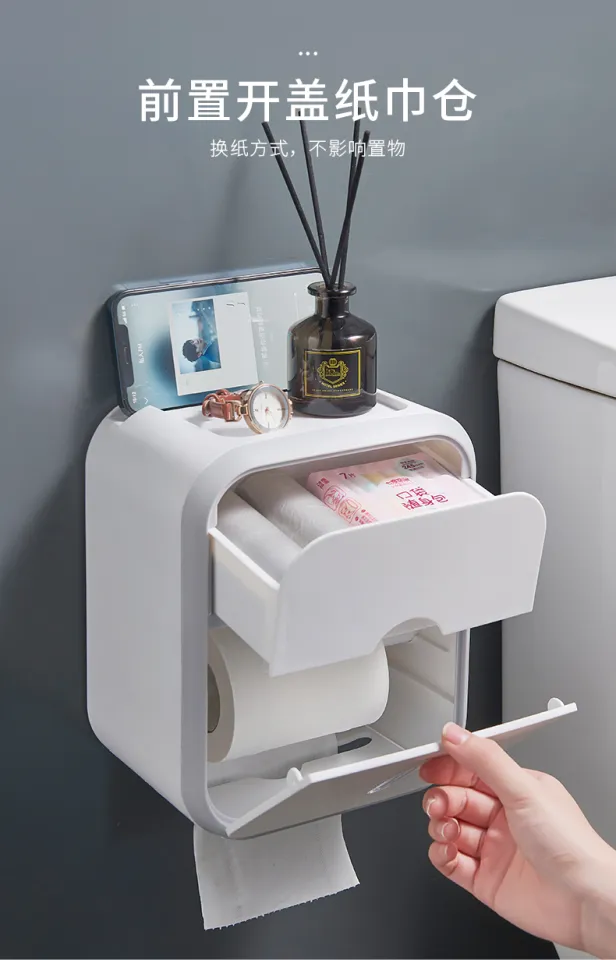In the realm of everyday household necessities, there lies an unassuming but indispensable item—the box of toilet paper. Its humble presence in bathrooms and powder rooms around the world belies a rich history and profound cultural impact. From its humble origins to its modern-day advancements and ecological implications, the box of toilet paper is a fascinating subject that deserves our attention.
The Great Toilet Paper Shortage of 2020

The year 2020 will forever be remembered for many reasons, one of which being the widespread shortage of toilet paper. As the COVID-19 pandemic swept across the globe, panic-buying ensued, leading to empty shelves of toilet paper in stores everywhere. This sudden scarcity brought the humble box of toilet paper into the spotlight, with people hoarding it and even resorting to making their own. But what caused this shortage in the first place?
The Panic-Buying Phenomenon
The sudden surge in demand for toilet paper during the early days of the pandemic can be attributed to panic-buying. People were afraid of being stuck at home for an extended period without access to essential supplies, including toilet paper. This fear was fueled by social media and news reports of shortages in other countries.
However, the panic-buying itself was a self-perpetuating cycle. As more people stocked up on toilet paper, the shelves emptied out faster, leading to increased fear and further hoarding. This phenomenon resulted in a global toilet paper shortage, leaving many without this essential item.
Supply Chain Disruptions
Another factor that contributed to the toilet paper shortage was disruptions in the supply chain. With lockdowns and restrictions in place, many factories and transportation systems were shut down or operating at reduced capacity. This disruption in production and delivery led to a decrease in the available supply of toilet paper.
Moreover, toilet paper manufacturers faced challenges in adapting to the sudden surge in demand. The machines used for producing toilet paper operate at a specific speed and capacity, and ramping up production to meet the increased demand was not an easy feat. This also resulted in delays in restocking and contributed to the shortage.
How to Make Your Own Toilet Paper

As the scarcity of toilet paper became apparent, people turned to alternative solutions, one of which was making their own. While it may not be as soft or convenient as store-bought toilet paper, it is a viable option in times of desperate need.
Materials Needed
- Old t-shirts, rags, or cloth wipes
- Scissors
- A container or box to store the homemade toilet paper
Instructions
- Cut the old t-shirts, rags, or cloth wipes into squares of desired size (approximately 4×4 inches).
- Store the squares in the container or box.
- Use the homemade toilet paper as you would use regular toilet paper.
- After use, place the soiled squares in a designated container or laundry bag for washing and reuse.
Making your own toilet paper is not only a practical solution during a shortage but also an environmentally friendly option as it reduces the amount of waste produced.
The best toilet paper Brands

With the countless options available in the market, it can be overwhelming to choose the best toilet paper brand. However, several factors can help determine the quality of a toilet paper brand, such as softness, strength, absorbency, and environmental sustainability.
Softness
Softness is often the top priority for consumers when choosing a toilet paper brand. It is important to note that softness does not always equate to quality as some brands use chemicals and additives to achieve a softer texture. Instead, look for brands that use natural fibers like bamboo or recycled materials for a more sustainable and gentle option.
Strength and Absorbency
Another important factor is strength and absorbency. A good toilet paper should be able to hold up to use without tearing or leaving behind any residue. It should also be able to absorb moisture effectively. Look for brands that offer a balance of strength and absorbency.
Environmental Sustainability
As consumers become more environmentally conscious, the impact of our everyday choices on the planet has become a crucial consideration. When choosing a toilet paper brand, opt for those made from sustainable materials such as bamboo or recycled paper. Some brands even offer biodegradable options that break down quickly in septic systems, reducing their ecological footprint.
Based on these factors, some top toilet paper brands include Charmin Ultra Soft, Seventh Generation, and Quilted Northern Ultra Plush.
| Brand | Softness | Strength | Absorbency | Sustainability |
|---|---|---|---|---|
| Charmin Ultra Soft | High | High | High | Moderate |
| Seventh Generation | High | Moderate | Moderate | High |
| Quilted Northern Ultra Plush | High | High | High | Moderate |
The Environmental Impact of Toilet Paper
The convenience and ubiquity of toilet paper often make us overlook its environmental impact. However, the production and consumption of toilet paper have a significant impact on the environment.
Deforestation
One of the main environmental concerns with toilet paper is deforestation. The production of virgin pulp for toilet paper contributes to the destruction of old-growth forests. This not only disrupts ecosystems but also releases carbon dioxide into the atmosphere, contributing to climate change.
Water and Energy Usage
The production of toilet paper requires large amounts of water and energy. It takes about 37 gallons of water to produce a single roll of toilet paper, and the manufacturing process also generates greenhouse gas emissions. Moreover, the bleaching process used to make toilet paper white also releases dangerous chemicals into the environment.
Solutions for a More Sustainable Future
There are steps we can take to reduce the environmental impact of our toilet paper usage. Opting for recycled or bamboo-based toilet paper is a more sustainable choice as it reduces the demand for virgin pulp and prevents further deforestation.
Additionally, reducing our consumption by using less toilet paper per use or switching to bidets can also have a significant impact. The production of one roll of toilet paper requires 1.5 pounds of wood and 37 gallons of water, so even small changes in usage can make a difference.
The History of Toilet Paper
The history of toilet paper can be traced back to ancient civilizations. In ancient China, around the 6th century AD, people used sheets of paper made from bamboo or rice straw for wiping after using the toilet. These sheets were often scented with fragrant herbs and spices. In medieval Europe, people resorted to using scraps of cloth, wool, or hay as toilet paper.
The first commercially produced toilet paper was invented in the United States in 1857 by Joseph Gayetty, a New York stationer. Gayetty’s product, which he called medicated paper, was made from sheets of hemp paper infused with aloe vera. It was marketed as a hygienic and soothing alternative to using cloth or sponges.
In the late 19th and early 20th centuries, the industrial revolution brought about advancements in mass-production technology, leading to the rise of industrial toilet paper production. In 1879, the Scott Paper Company was founded in Philadelphia, Pennsylvania, and quickly became a major player in the industry.
The Science of Toilet Paper
While it may seem like a simple everyday item, toilet paper involves a complex science in its manufacturing process. The main raw material for toilet paper is pulp, which can come from various sources such as trees, bamboo, or recycled paper.
The pulp is then mixed with water and chemicals to create a slurry, which is then filtered through screens to remove any impurities. It is then pressed and dried into thin sheets that are later wound onto giant rolls before being cut into smaller rolls for packaging.
Several factors affect the quality of toilet paper, including the type of pulp used, the number of plies, and the design of the embossing patterns. Manufacturers also use different techniques to make the paper softer and more absorbent, such as adding lotion or using mechanical processes to break down the fibers.
The Different Types of Toilet Paper
While most people are familiar with the standard roll of toilet paper, there are actually several types available on the market. The most common types of toilet paper include standard, jumbo, and coreless rolls.
Standard rolls are typically one-ply and have around 1,000 sheets per roll. Jumbo rolls are two to four times larger than standard rolls and are usually found in public restrooms. Coreless rolls are becoming increasingly popular as they eliminate the wasteful cardboard tube found in traditional rolls.
Moreover, there are also variations in the ply of toilet paper, with single-ply, two-ply, and even three-ply options available. While single-ply is the most basic and cost-effective option, two or three-ply toilet paper is thicker and more absorbent.
The Cost of Toilet Paper
Toilet paper is an essential item that we often take for granted, but its cost can add up over time. The price of toilet paper varies depending on factors such as brand, ply, and quantity. According to Statista, the average retail price for a pack of four rolls of toilet paper in the United States in 2020 was $4.39.
However, the cost of toilet paper has increased over the years, with the average price being $2.06 in 2005, almost doubling in 15 years. This increase can be attributed to factors such as inflation, production costs, and supply and demand.
The Future of Toilet Paper
As the world becomes more environmentally conscious, there is a growing demand for sustainable and eco-friendly products, including toilet paper. In the future, we can expect to see more innovations in the manufacturing process of toilet paper, with a focus on reducing its environmental impact.
Moreover, technological advancements may lead to the development of biodegradable and compostable options that are more gentle on the environment. As consumers become more aware of the consequences of their everyday choices, the demand for sustainable toilet paper is likely to increase.
Toilet Paper: The Ultimate Guide
From its humble beginnings as scraps of cloth and hay to its modern-day mass-produced form, the box of toilet paper has come a long way. Its history and cultural impact are often overlooked, but it is an essential item that affects our daily lives in more ways than we realize.
As consumers, we have the power to make choices that can have a positive impact on the environment, from choosing sustainable brands to reducing our usage. The next time you reach for the box of toilet paper, remember its rich history and the role it plays in our society.
Conclusion
The box of toilet paper may seem like a mundane and unimportant item, but its history and impact tell a different story. From ancient civilizations to modern-day production processes, toilet paper has evolved along with human society. As we move towards a more sustainable future, it is crucial to consider the environmental implications of our everyday choices, even something as seemingly insignificant as toilet paper. With a better understanding of its history and impact, we can make more informed decisions about this everyday necessity.